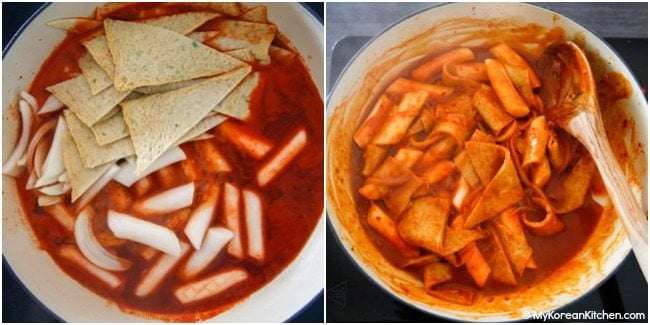Craving a taste of Korea? Look no further than this authentic and easy-to-follow recipe for Homemade Korean Tteokbokki! This popular street food, also known as spicy rice cakes, is a delightful combination of chewy rice cakes, savory fish cakes, and a fiery gochujang-based sauce. Perfect for a quick lunch, a comforting dinner, or a spicy snack to share with friends, this Tteokbokki recipe will transport your taste buds straight to the bustling streets of Seoul.
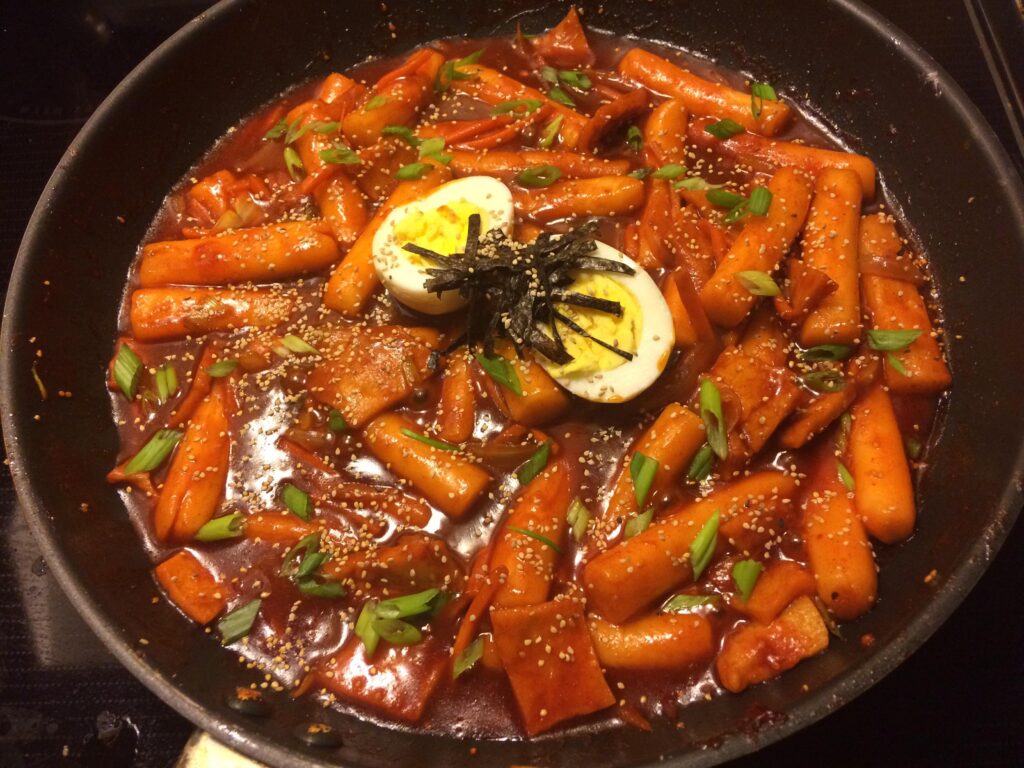
Tteokbokki is more than just a dish; it’s an experience. The satisfying chewiness of the rice cakes, the umami richness of the sauce, and the customizable spice level make it a favorite for many. This recipe breaks down the process into simple steps, ensuring that even beginner cooks can achieve restaurant-quality results at home. Forget ordering takeout – with this guide, you’ll be whipping up delicious Korean Tteokbokki in no time!

We’ll cover everything from selecting the right ingredients to adjusting the spice level to your preference. Get ready to embark on a culinary adventure and create a truly authentic and unforgettable Korean Tteokbokki experience.
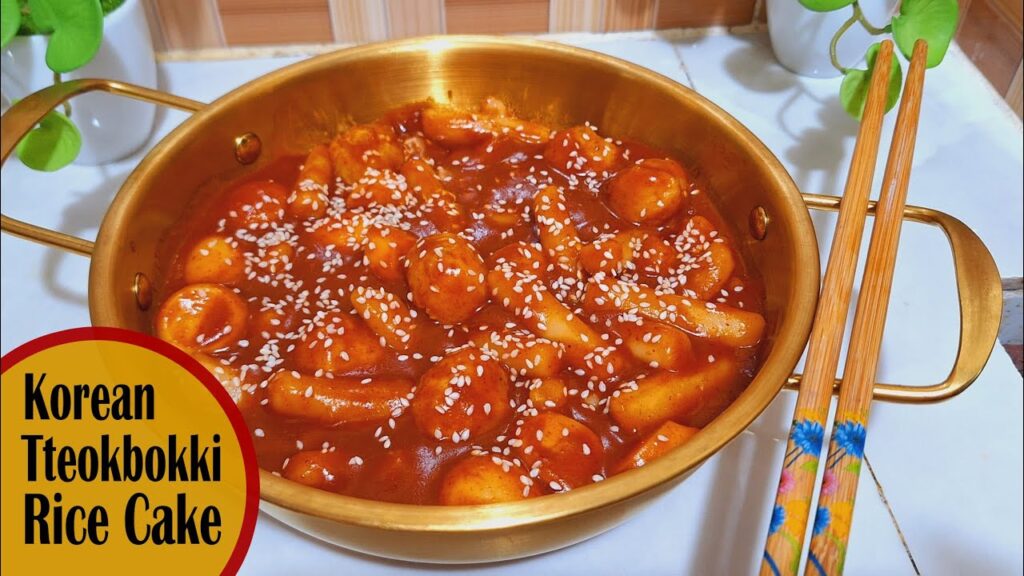
[Image Placeholder: High-quality photo of finished Tteokbokki]
Recipe Overview
Here’s a quick glance at what you can expect when making this delicious dish:
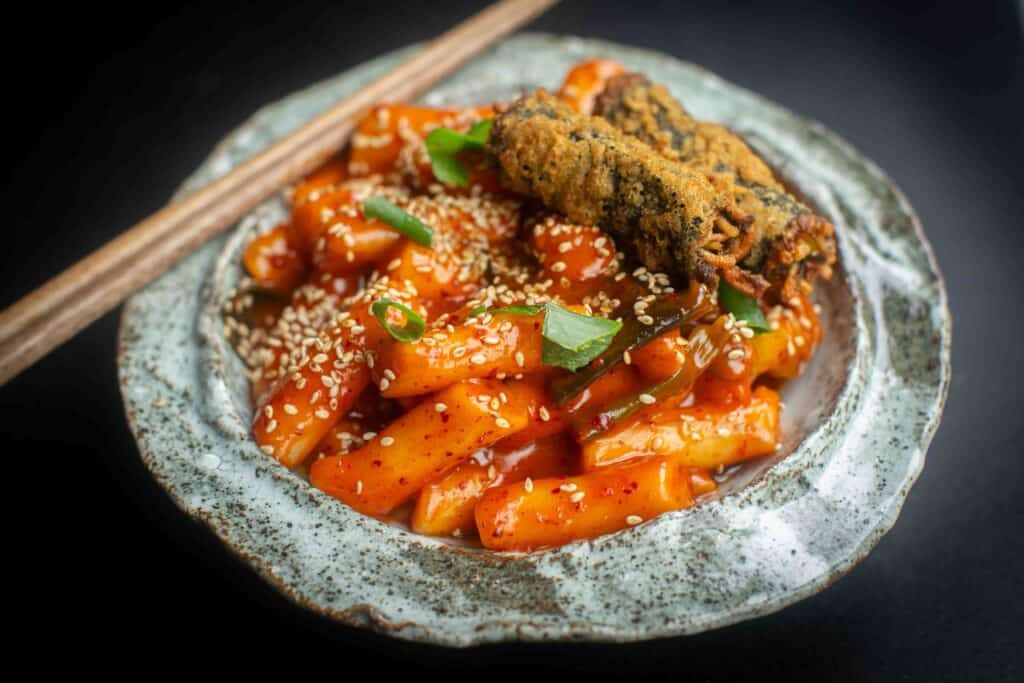
| Category | Value |
|---|---|
| Preparation Time | 20 minutes |
| Cooking Time | 25 minutes |
| Servings | 2-3 servings |
| Difficulty | Easy |
Nutrition per serving (estimated)
| Nutrient | Amount |
|---|---|
| Calories | Approximately 450-550 kcal |
| Carbohydrates | 80-100g |
| Protein | 15-20g |
| Fat | 5-10g |
Note: Nutritional information is an estimate and can vary based on specific ingredients and portion sizes.
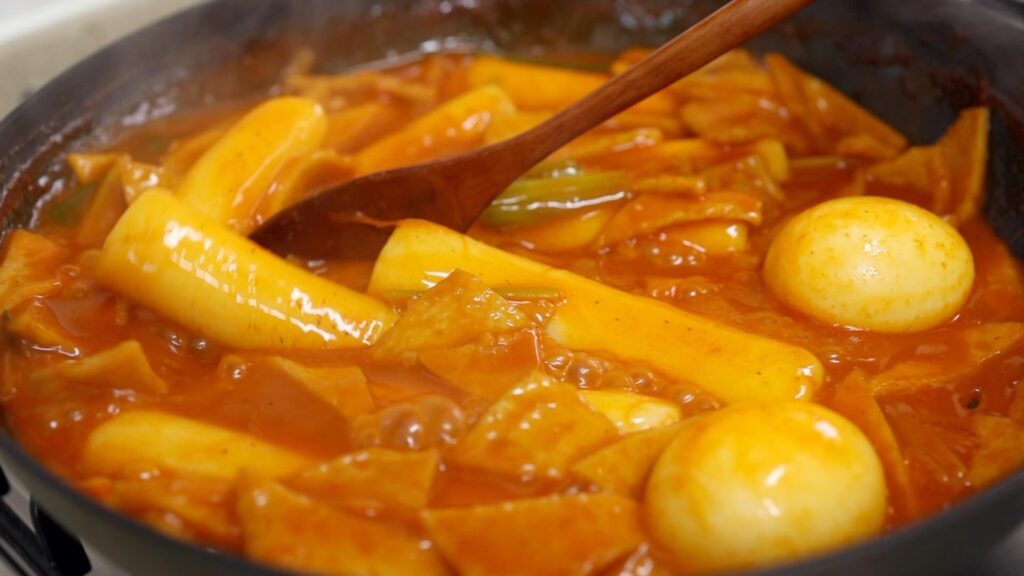
Ingredients for Tteokbokki
Make sure you have all of these ingredients on hand before you start cooking your delicious Korean Tteokbokki. Don’t worry if you can’t find every single item; we’ll provide some substitutions below!
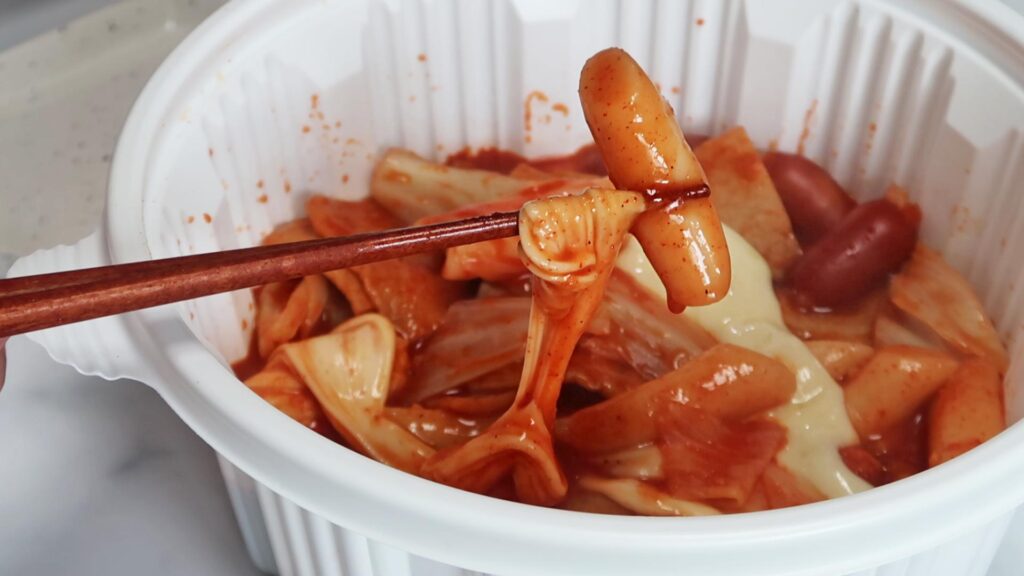
| Ingredient | Quantity | Notes |
|---|---|---|
| Tteok (Korean Rice Cakes) | 500g | Look for garae-tteok, the cylinder-shaped rice cakes. If frozen, thaw completely before use. |
| Fish Cakes (Eomuk) | 2-3 sheets | Korean fish cakes are best, but any firm fish cake will work. Cut into bite-sized pieces. |
| Gochujang (Korean Chili Paste) | 2-3 tablespoons | Adjust to your spice preference. |
| Gochugaru (Korean Chili Powder) | 1-2 tablespoons | Adds extra heat and flavor. Optional, but recommended. |
| Soy Sauce | 1 tablespoon | Adds umami and depth of flavor. |
| Sugar | 1 tablespoon | Balances the spiciness and adds a touch of sweetness. |
| Garlic, minced | 1 teaspoon | Adds a pungent aroma and flavor. |
| Anchovy Broth (or Water) | 2 cups | Anchovy broth adds a richer flavor, but water works fine. You can also use vegetable broth. |
| Green Onion, chopped | 1-2 stalks | For garnish and added freshness. |
| Sesame Oil | 1 teaspoon | Adds a nutty aroma and flavor. |
| Sesame Seeds | Optional | For garnish. |
| Hard-boiled Eggs (Optional) | 1-2, halved | A classic addition to Tteokbokki. |
| Ramen Noodles (Optional) | 1/2 packet | Adding ramen noodles transforms it into Rabokki! |
| Cabbage (Optional) | 1 cup, chopped | Adds a bit of sweetness and texture. |
Substitutions and Variations:
- Tteok: If you can’t find Korean rice cakes, you can try using gnocchi, though the texture will be different.
- Fish Cakes: Use any firm white fish or even imitation crab meat as a substitute.
- Gochujang: There isn’t a direct substitute, but you can try a mix of sriracha and miso paste for a similar fermented chili flavor.
- Anchovy Broth: Vegetable broth or even chicken broth can be used.
Experiment with adding other vegetables like carrots, onions, or mushrooms to customize your Korean Tteokbokki.
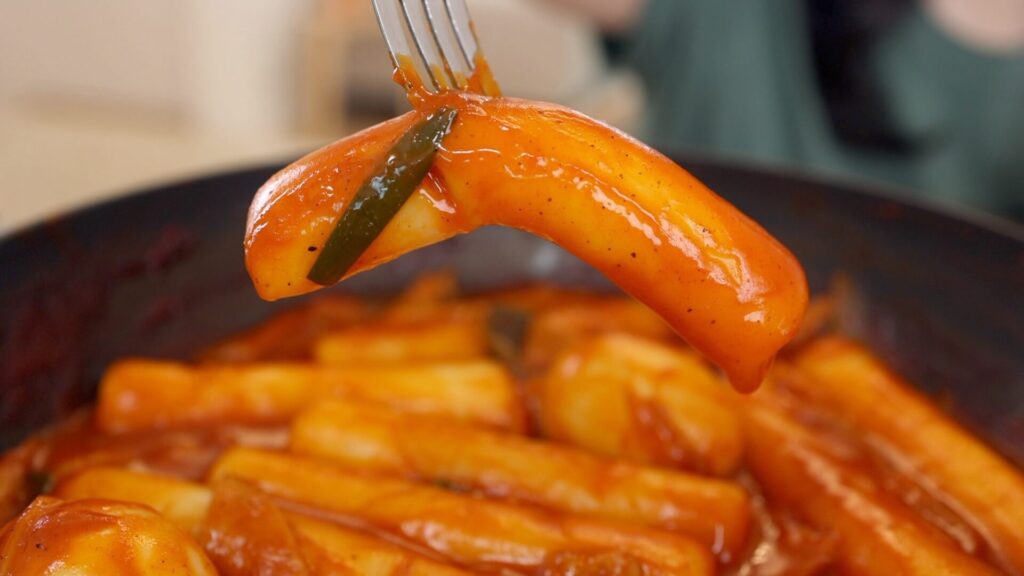
Cooking Instructions
Now, let’s get cooking! Follow these simple steps to create your own mouthwatering Korean Tteokbokki:
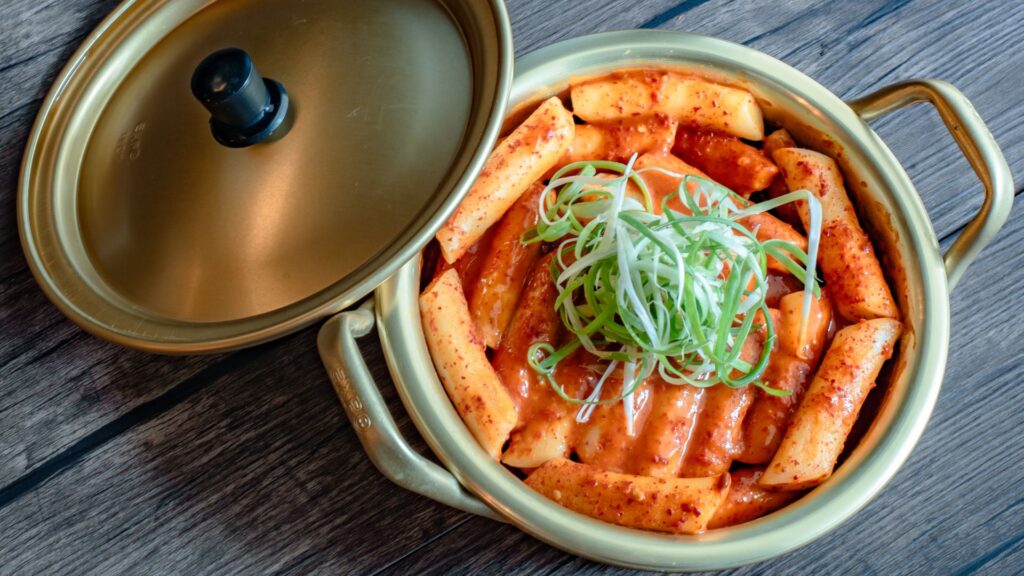
- Prepare the Rice Cakes: If using frozen rice cakes, thaw them completely. Rinse the rice cakes under cold water to remove any excess starch. This helps them stay chewy and prevents them from sticking together.
- Prepare the Sauce: In a medium bowl, combine the gochujang, gochugaru (if using), soy sauce, sugar, and minced garlic. Mix well to form a smooth paste. This is the heart of your Korean Tteokbokki sauce!
- Prepare the Broth: If using anchovy broth, heat it up in a pot or large pan. If using water, you can heat it with a dried kelp (kombu) piece for added flavor. Remove the kelp before the water boils.
- Add the Sauce to the Broth: Stir the gochujang mixture into the heated broth. Bring the mixture to a simmer over medium heat, stirring constantly to ensure the sauce is well incorporated.
- Add the Rice Cakes and Fish Cakes: Gently add the rice cakes and fish cakes to the simmering sauce. Make sure the rice cakes are submerged in the liquid.
- Cook Until the Rice Cakes are Tender: Continue to simmer the Korean Tteokbokki for about 10-15 minutes, or until the rice cakes are soft, chewy, and have absorbed the sauce. Stir occasionally to prevent sticking. The sauce should thicken as it cooks down.
- Adjust the Consistency: If the sauce becomes too thick, add a little more broth or water to reach your desired consistency. If the sauce is too thin, continue to simmer until it thickens.
- Add Optional Ingredients: If you’re using hard-boiled eggs, ramen noodles, or cabbage, add them during the last 5 minutes of cooking. The ramen noodles will cook quickly, and the cabbage will soften slightly.
- Garnish and Serve: Once the rice cakes are cooked to your liking and the sauce has reached the desired consistency, remove the pan from the heat. Stir in the sesame oil and sprinkle with chopped green onions and sesame seeds.
- Serve Immediately: Serve your homemade Korean Tteokbokki hot and enjoy! You can serve it directly from the pan or transfer it to a serving bowl.
Serving Suggestions
Korean Tteokbokki is delicious on its own, but here are some ideas to make it even more enjoyable:

- Add Cheese: Sprinkle shredded mozzarella or cheddar cheese on top of the Tteokbokki while it’s still hot and let it melt for a cheesy, gooey experience.
- Serve with Kimchi: The spicy, sour flavor of kimchi complements the spiciness of the Tteokbokki perfectly.
- Pair with Korean Side Dishes (Banchan): Enjoy your Tteokbokki with other Korean side dishes like pickled radish, seasoned spinach, or bean sprout salad.
- Make it a Meal: Add more protein, such as beef bulgogi or tofu, to make it a more substantial meal.
Tips and Notes for Perfect Tteokbokki
Here are a few extra tips to ensure your Korean Tteokbokki turns out perfectly every time:

- Spice Level: Adjust the amount of gochujang and gochugaru to your preference. Start with less and add more to taste. You can also add a pinch of sugar to balance the spiciness.
- Rice Cake Quality: The quality of the rice cakes matters. Look for rice cakes that are soft and chewy, not hard or dry.
- Don’t Overcook: Be careful not to overcook the rice cakes, as they can become mushy. Cook them until they are soft and chewy, but still hold their shape.
- Adjust the Sauce: Taste the sauce as it cooks and adjust the seasonings as needed. You may want to add more soy sauce, sugar, or gochujang depending on your preference.
- Make it Vegetarian/Vegan: To make this recipe vegetarian or vegan, simply omit the fish cakes or substitute them with tofu or mushrooms. Use vegetable broth instead of anchovy broth.
- Storage: Leftover Korean Tteokbokki can be stored in the refrigerator for up to 2 days. Reheat it gently on the stovetop or in the microwave before serving.
Homemade Korean Tteokbokki is a fantastic dish to share with friends and family. It’s customizable, flavorful, and incredibly satisfying. With this easy-to-follow recipe, you can now enjoy this popular Korean street food in the comfort of your own home. So, gather your ingredients, put on your apron, and get ready to experience the deliciousness of Tteokbokki!

Enjoy your Korean Tteokbokki and remember to experiment to find your perfect spice level and ingredient combinations! This recipe is a great starting point for your own culinary adventures.

The key to amazing Tteokbokki is fresh ingredients and careful attention to the sauce. Don’t be afraid to adjust the recipe to suit your taste. Happy cooking!

